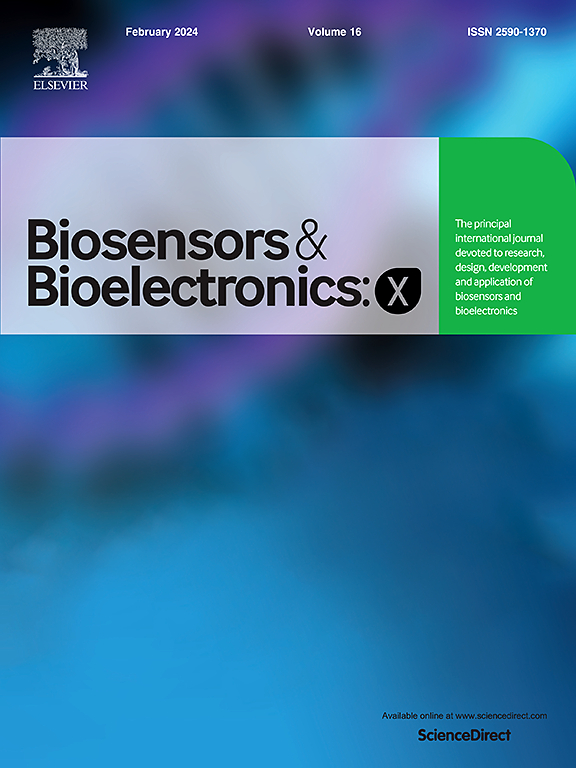基于神经元动作电位的微共振马达
IF 10.61
Q3 Biochemistry, Genetics and Molecular Biology
引用次数: 0
摘要
本文介绍了一种新型的生物机电装置,通过将霍奇金-赫胥黎(HH)神经元模型响应与机械谐振器耦合,将可兴奋细胞的电化学势能转化为机械功。该装置利用生物细胞的膜电位来驱动微机电系统(MEMS)内的机械振荡,解决了生物机电系统中的关键挑战,包括生物相容性、小型化和高效能量转换。通过数值模拟和理论分析相结合,证明了耦合hh谐振器系统通过参数放大获得稳定的极限环和显著的机械位移。这种放大是由非线性电容耦合引起的,这导致了控制系统动力学的类马蒂厄方程,从而使相对较小的电压输入产生大的振荡。这种参数共振对于器件维持振荡运动的能力至关重要,使其非常适合集成到紧凑和可植入的MEMS应用中。潜在的应用包括用于实时生理监测的植入式传感器和执行器,以及受益于生物能源的先进微尺度系统。这些发现强调了生物机电系统在推进生物医学和微工程技术方面的前景,为个性化医疗、生物机器人等领域的创新解决方案铺平了道路。本文章由计算机程序翻译,如有差异,请以英文原文为准。
A micro resonating motor based on neuron action potential
This paper introduces a novel bioelectromechanical device converting the electrochemical potential energy of excitable cells into mechanical work by coupling the Hodgkin–Huxley (HH) neuronal model response to a mechanical resonator. Addressing key challenges in bioelectromechanical systems, including biocompatibility, miniaturization, and efficient energy conversion, the device leverages the membrane potentials of biological cells to drive mechanical oscillations within microelectromechanical systems (MEMS). Through a combination of numerical simulations and theoretical analyses, it is demonstrated that the coupled HH–resonator system achieves stable limit cycles and significant mechanical displacements via parametric amplification. This amplification arises from the nonlinear capacitive coupling, which leads to Mathieu-like equations governing the system's dynamics, thereby enabling large oscillations from relatively small voltage inputs. Such parametric resonance is critical for the device's ability to sustain oscillatory motion, making it highly suitable for integration into compact and implantable MEMS applications. Potential applications include implantable sensors and actuators for real-time physiological monitoring, and advanced micro-scale systems that benefit from biologically sourced energy. The findings underscore the promise of bioelectromechanical systems in advancing biomedical and microengineering technologies, paving the way for innovative solutions in personalized medicine, bio-robotics, and beyond.
求助全文
通过发布文献求助,成功后即可免费获取论文全文。
去求助
来源期刊

Biosensors and Bioelectronics: X
Biochemistry, Genetics and Molecular Biology-Biophysics
CiteScore
4.60
自引率
0.00%
发文量
166
审稿时长
54 days
期刊介绍:
Biosensors and Bioelectronics: X, an open-access companion journal of Biosensors and Bioelectronics, boasts a 2020 Impact Factor of 10.61 (Journal Citation Reports, Clarivate Analytics 2021). Offering authors the opportunity to share their innovative work freely and globally, Biosensors and Bioelectronics: X aims to be a timely and permanent source of information. The journal publishes original research papers, review articles, communications, editorial highlights, perspectives, opinions, and commentaries at the intersection of technological advancements and high-impact applications. Manuscripts submitted to Biosensors and Bioelectronics: X are assessed based on originality and innovation in technology development or applications, aligning with the journal's goal to cater to a broad audience interested in this dynamic field.
 求助内容:
求助内容: 应助结果提醒方式:
应助结果提醒方式:


